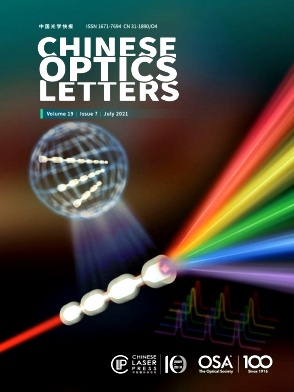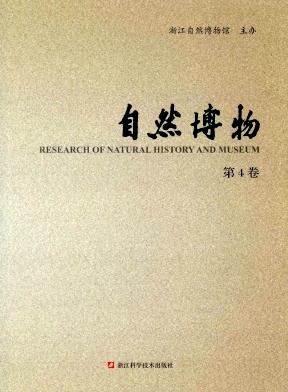Chinese Optics Letters雜志評(píng)職稱可以嗎?單位認(rèn)可嗎?
來源:投稿網(wǎng) 2024-08-16 9:30:05
Chinese Optics Letters雜志是可以用于評(píng)職稱的。怎么判斷一本期刊是否可以用于評(píng)職稱了?首先要看期刊是否正規(guī),正規(guī)的期刊都可在國家新聞出版總署查詢,經(jīng)查詢Chinese Optics Letters雜志國內(nèi)刊號(hào)31-1890/O4國際刊號(hào)1671-7694是一本正規(guī)雜志,其次就要看作者的專業(yè)和單位文件要求了。
評(píng)審時(shí)所選的專業(yè)方向應(yīng)該與期刊方向一致,如Chinese Optics Letters雜志是屬于科學(xué)類的專業(yè)期刊,主要欄目包括光纖光學(xué)與光通信;激光器與激光光學(xué);材料;非線性光學(xué);量子光學(xué)。如果評(píng)審科學(xué)方向的職稱,Chinese Optics Letters雜志是個(gè)不錯(cuò)的選擇。
最后一點(diǎn),一定要了解清楚單位文件或者上級(jí)部門的文件具體要求,如果看不明白,或者對(duì)具體要求定義不清楚的,也可以咨詢投稿網(wǎng)在線客服,Chinese Optics Letters雜志是國家級(jí)期刊,仔細(xì)閱讀晉升文件,其中是否對(duì)期刊等級(jí)有要求,亦或者必須要科技核心、北大核心,或者是有單獨(dú)的評(píng)審認(rèn)定期刊目錄。
Chinese Optics Letters投稿要求
Chinese Optics Letters雜志投稿須知:
1、 TitleThe title should be concise but informative. Avoid beginning with an article or a preposition. The words "new" or "novel" should be avoided in the title and the text for legal reasons. Titles may be edited by the publisher to facilitate computer search.。
2、 Author names and AffiliationsAuthor names should be given in full and consistent form to facilitate indexing. Affiliations and postal addresses for all authors should appear on the title page.。
3、 AbstractThe abstract should be no longer than 100 words. It should be informative, without descriptive words or citations, and contain the major conclusions and quantitative results or other significant items in the paper. Together with the title, the abstract must be adequate as an index to all the subjects treated in the paper, and will be used as a base for indexing.。
4、 OCIS CodesOCIS codes should be provided to help with indexing. This set of codes was formulated by the Optical Society of America and well-known in the optical research world. OCIS codes are available on Chinese Optics Letters’ web page and the OSA publication web pages. Each manuscript must be given 2-4 OCIS codes below the abstract, and the principal index code should be placed first.。
5、 EquationsEquations should be punctuated and aligned to bring out their structure, and numbered consecutively in round brackets on the right-hand side of the page.Notation. Notation must be legible, clear, compact, and consistent with standard usage. In general, acronyms should be defined at first use. Variables and Vectors. Set single-letter variables in italics (Eg. M). Set vectors in boldface (Eg. m). Functions, derivative "d," abbreviations, and multi-letter identifiers should be set in roman (plain) type (Eg. α, cos, ∫...dx). Fences. For simple bracketing the usual order of parentheses and brackets is { [ ( { [ ( ) ] } ) ] }. Bit and Byte. The standard abbreviations for bit and byte are b and B, respectively. To avoid confusion, these units should be spelled out in most cases (1 bit, 20 GB). Display equations should be broken and aligned for two-column display unless spanning across two columns is essential. Equations should be centered with equation numbers set flush right. For Math Type math, use the Format Equations feature to format all equations as Times + Symbol 10. Note: There must be a blank line space above and below each displayed equation.。
6、 ReferencesReferences should be numbered consecutively in the order in which they are first referenced in the body of the manuscript. Two references [2,3] should be included together, separated by a comma, and three or more consecutive references should be indicated by the bounding numbers and an en dash [1-4]. When compiling your references, be sure to include the titles of articles. COL requires this information before a paper can be sent to peer review. The reference titles will subsequently be removed by copy editors before they are published, so this information is not included in the length estimate sent to authors when a positive decision is made by the editor. All reference authors should be included in the reference list but when reference authors are mentioned in the text, use surnames only (unless further clarity is needed), and use "et al." and first author name when three or more authors are given. The format of references is as follows:Journal paper1、 Q. Ji, X. Ma, J. Sun, H. Zhang, and Y. Yao, "Novel method for measurement of effective cavity length of DBR fiber", Chin. Opt. Lett. 8, 398 (2010).Book2、 N. Bloembergen, Nonlinear Optics (Springer, 1965).Paper in published conference proceedings3、 R. E. Kalman, "Algebraic aspects of the generalized inverse of a rectangular matrix", in Proceedings of Advanced Seminar on Generalized Inverse and Applications 111 (1976).SPIE proceedings4、 S. K. Griebel, M. Richardson, K. E. Devenport, and H. S. Hinton, "Experimental performance of an ATM-based buffered hyperplane CMOSSEED smart pixel array", Proc. SPIE 3005, 254 (1997).Paper accepted for publication5、 H. Qi, M. Zhu, W. Zhang, K. Yi, H. He, and J. Shao, “Dependence of wavefront errors on the nonuniformity of thin film", Chin. Opt. Lett. (to be published).Internet links6、 A. G. Ramm, H. Wang, and J. Ye, "Invisible obstacles", http://www.arxiv.org/abs/math-ph/0608034 (June 1, 2011).Patent。
7、 K. Zhang, J. Zhang, R. Wang, R. Guo, J. Wang, and K. Peng, “All solid state single frequency and frequency-doubled laser” (in Chinese) Chinese Patent ZL98125474、8 (2000).7、 Figures and TablesFigures should be suitable (resolution above 300 dpi) for immediate reproduction and embedded in the text. They should be set as one column wide (6-8 cm) if possible unless two-column display is essential. In the figures, the main lines should be about 0.3 mm in width, and the assistant lines 0.15 mm. Notations in the figures should be distinct and consistent with the same ones in the text, and their font size will be 7-9 pt. Figures should also be uploaded as separate figure files. Each figure should have its own caption. Color Art is Online Only, and free to authors.Tables must be numbered in order of appearance and identified with appropriate titles. The table title, which should be brief, goes above the table. Note that tables are usually typeset, not scanned (tables cannot be electronically reduced in size). Tables should be set in one column wide if possible and be placed near their first mention in the body.。
8、 Article Length and ProofNote that Chinese Optics Letters has a limit of five printed pages. If a paper exceeds this limit, it must be shortened before the paper is accepted. If the page proof is over the five-page limit, the proof must be shortened before the paper can be assigned to a final issue. Authors should use the COL Word or LaTeX templates to prepare manuscripts to facilitate length checking.
 點(diǎn)擊前往雜志首頁
點(diǎn)擊前往雜志首頁
相關(guān)問題
- Chinese Optics Letters是正規(guī)期刊嗎?
- Chinese Optics Letters是什么級(jí)別的期刊?
- Chinese Optics Letters是北大核心嗎?
- Chinese Optics Letters是科技核心嗎?
- Chinese Optics Letters是統(tǒng)計(jì)源核心嗎?
- Chinese Optics Letters是南大核心CSSCI嗎?
- Chinese Optics Letters是CSCD期刊嗎?
- Chinese Optics Letters是國家級(jí)期刊嗎?
- Chinese Optics Letters是SCD期刊嗎?

刊.jpg)
博物館研究.jpg)
新時(shí)代.jpg)
.jpg)
.jpg)
于我們.jpeg)